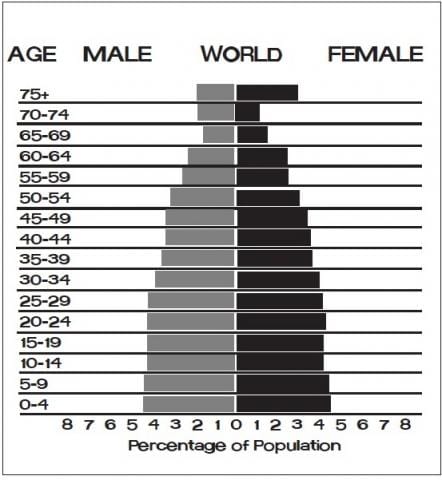This is post 2 of 4 in a series on using Population Education in APES. Check out the series overview here.
Laboratory investigation activities are at the core of any AP Environmental Science course’s instructional methodology. Within the APES unit of Population, Power of the Pyramids has become the staple lab activity for introducing students to human population growth and the field of demography. It is in this lab where students have the opportunity to apply their skill and content knowledge through firsthand observation and analysis of real world challenges – specifically the age/sex distribution of a given country. Students are challenged to make sense of raw population data by constructing population pyramids (age-structure diagrams) and formulating conclusions about the impacts such population trends will have in a selected country.

Power of the Pyramids’ Objectives:
- Students will be able to :
- Calculate percentages using raw numbers for each age/sex group in a given population.
- Construct a population age/sex distribution graph for one of six different countries.
- Make connections between the shapes of the graphs and the growth patterns of different countries.
The six sample countries used in this lesson were chosen to provide students with a broad scope of global population trends along the demographic transition model. Statistical data is provided for: United States, Mexico, China, France, Nigeria, and India. Interdisciplinary in its design, Power of the Pyramids requires students to activate their subject knowledge of mathematics and the social studies, in addition to all elements of environmental science.
Connection to AP Environmental Science
Human population dynamics are an integral component of the APES coursework. With Power of the Pyramids, students build their skills and knowledge of demography, while simultaneously establishing a strong foundation for working through the complex human-environmental themes integral to AP Environmental Science. Nita Ganguly, an APES teacher at Oak Ridge High School in Oak Ridge, Tennessee, cited Power of the Pyramids in the Sample Syllabus 1 she provided for the official AP Environmental Science Teacher’s Guide as the lab activity of choice with her population unit. APES classroom tested and College Board approved, Power of the Pyramids continues to serve as an ideal lesson for student inquiry into human population dynamics.



